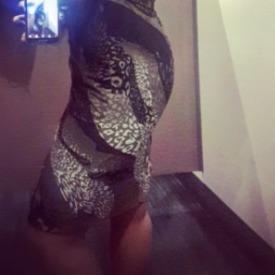Calories Burned Running vs Elliptical?
Options

nicoleekristenn
Posts: 14 Member
Hey everyone. I have a hard time believing the treadmill when it tells me I'm burning less calories than the Elliptical during the same amount of time. I'm a veryveryvery beginner runner, so my heart rate feels way higher than on the elliptical, I'm breathing hard and sweating much more than the elliptical. Is it possible that I'm still burning more calories on the elliptical even though it feels like I'm not doing nearly as much work?
0
Replies
-
To be honest, don't believe anything those machines tell you in regards to calorie burning. You can use them as a guide and really rough estimate but, the amount of calories burned isn't as simple as the weight you input and how fast the machine says you're moving. The amount of calories you're burning depends on a number of things including: weight, BF %, heart rate, metabolic rate (which is difficult to determine itself),etc. With that being said, if your rate of perceived exertion is higher, you're most likely burning more calories.0
-
From my experience, the elliptical estimates are too high by far.
Ironzee7 is correct, use the number only as a guide.
I usually deduct about 30% from the treadmill estimate.0 -
I use a HRM and my calories burned are alot higher on the treadmill than the elliptical. I do not trust the machines even though my heart rate on my HRM is the same as on the machines and I put in my weight and age...the numbers are still off. I always go by my HRM.0
-
As others have said, if anything its the elliptical that's lying, not the treadmill. And on top of that, MFP's calculations for the same time period are always much more. I go by a little less than what the treadmill says and adjust the time in MFP to come out to the correct amount of calories.0
-
I also think the elliptical is too high in calories, and its not all about that, if u feel a lot sweater and have a higher heart rate on the treadmill it's obviously making u work harder and means u will be burning more calories. Unfortunately these machines don't take into account how experienced you are on them, I.e if you use the elliptical everyday your body is going to be used to it where as if you've only just started using the treadmill it will probably be burning more calories than what it says x0
-
To be honest, don't believe anything those machines tell you in regards to calorie burning. You can use them as a guide and really rough estimate but, the amount of calories burned isn't as simple as the weight you input and how fast the machine says you're moving. The amount of calories you're burning depends on a number of things including: weight, BF %, heart rate, metabolic rate (which is difficult to determine itself),etc. With that being said, if your rate of perceived exertion is higher, you're most likely burning more calories.
He pretty much got it. It's just a rough guide.. it would probably be a bit more accurate if all machines asked for weight, height, BF%, etc but most only ask for age or weight. I find ellipticals overestimate..0 -
I bought an HRM for this very reason. My calorie count on the treadmill is nearly perfect. The difference between my HRM and treadmill calories are maybe off by 5, but still close enough. The elliptical calories are showing two times as many as my HRM though. Don't trust those numbers. If you need to estimate, I would say go with 50-60% of what your elliptical is telling you.0
-
You are most likely burning a lot more calories on the treadmill. Running is the most effective way to burn calories, no other machine will compare with the min by min burn of running. I generally use the 100 calories per mile rule on the treadmill. On the elliptical I guess and just lower it by a few hundred (that being said when I'm on an elliptical it is for 45-90 minutes)
Don't trust the machines. If i'm really trying to get a good estimate I will see what the machine says, what MFP says, google a couple more calculators (tryng to find one that ask for height, weight, age, sex) and then average them all together throwing out the highest.0 -
To be honest, don't believe anything those machines tell you in regards to calorie burning. You can use them as a guide and really rough estimate but, the amount of calories burned isn't as simple as the weight you input and how fast the machine says you're moving. The amount of calories you're burning depends on a number of things including: weight, BF %, heart rate, metabolic rate (which is difficult to determine itself),etc. With that being said, if your rate of perceived exertion is higher, you're most likely burning more calories.
Calories burned IS as simple as weight x intensity. The problem with ellipticals is that there is no standard movement and thus no standard energy-estimating equations can be developed. Each machine needs its own custom algorithm and most manufacturers don't have the time, the money, the expertise, or the interest in doing the research to develop machine-specific algorithms. So they adapt another equation--often based on speed--and use those. Hence the overestimate.
Perceived exertion is not that reliable either for determining calorie burn. There have been a number of studies in which people self-selected a particular intensity on a cardio machine based on perceived exertion. At that self-selected intensity, there was a fairly broad range of actual calorie burns. For example people working at an RPE of 13, for example, did more actual work running on a treadmill (and thus burned more calories) compared to a bike or a stairclimber.0 -
To be honest, don't believe anything those machines tell you in regards to calorie burning. You can use them as a guide and really rough estimate but, the amount of calories burned isn't as simple as the weight you input and how fast the machine says you're moving. The amount of calories you're burning depends on a number of things including: weight, BF %, heart rate, metabolic rate (which is difficult to determine itself),etc. With that being said, if your rate of perceived exertion is higher, you're most likely burning more calories.
He pretty much got it. It's just a rough guide.. it would probably be a bit more accurate if all machines asked for weight, height, BF%, etc but most only ask for age or weight. I find ellipticals overestimate..
Again, weight and intensity are all you need. HRMs require more data because they are using math to guess at what is going on and the different factors improve the accuracy of HRM algorithms. HRMs require more data because they are inherently less accurate.
Machines can measure the actual work that is being performed. Theoretically, if one performed validation testing on each type of cardio equipment, one could derive energy prediction equations that would be the most accurate method available--based solely on weight and workload. And, in fact, in cases where companies HAVE done the research, that is exactly the case. Unfortunately, few have done it.0 -
To be honest, don't believe anything those machines tell you in regards to calorie burning. You can use them as a guide and really rough estimate but, the amount of calories burned isn't as simple as the weight you input and how fast the machine says you're moving. The amount of calories you're burning depends on a number of things including: weight, BF %, heart rate, metabolic rate (which is difficult to determine itself),etc. With that being said, if your rate of perceived exertion is higher, you're most likely burning more calories.
Calories burned IS as simple as weight x intensity. The problem with ellipticals is that there is no standard movement and thus no standard energy-estimating equations can be developed. Each machine needs its own custom algorithm and most manufacturers don't have the time, the money, the expertise, or the interest in doing the research to develop machine-specific algorithms. So they adapt another equation--often based on speed--and use those. Hence the overestimate.
Perceived exertion is not that reliable either for determining calorie burn. There have been a number of studies in which people self-selected a particular intensity on a cardio machine based on perceived exertion. At that self-selected intensity, there was a fairly broad range of actual calorie burns. For example people working at an RPE of 13, for example, did more actual work running on a treadmill (and thus burned more calories) compared to a bike or a stairclimber.
Ummm....no it's not. Person A weighs 170lbs with 10% BF and a RMR of 2200cals/day. Person B weighs 170lbs with a 20% BF% and a RMR of 1800cals/day. So they burn the same amount when running? I think not.
I wasn't using RPE as a factor for determining calories burned, simply as a way to establish which machine she is burning more calories on. Were all those people in the study the same weight? Have the same bf%? At the same fitness level? What about their RMR?
TMs are notoriously off for a number of reasons. I will refrain from writing a book but, strides differ than running outside because your foot is being pulled by the belt as opposed to progressing forward on a stationary surface.0 -
I wonder about that too, but if you can adjust the incline on the elliptical, its more like jogging up steps than running. Can also increase the resistance on the elliptical.
There are times when I get far more sore and sweaty on the elliptical than on a treadmill!0 -
To be honest, don't believe anything those machines tell you in regards to calorie burning. You can use them as a guide and really rough estimate but, the amount of calories burned isn't as simple as the weight you input and how fast the machine says you're moving. The amount of calories you're burning depends on a number of things including: weight, BF %, heart rate, metabolic rate (which is difficult to determine itself),etc. With that being said, if your rate of perceived exertion is higher, you're most likely burning more calories.
Calories burned IS as simple as weight x intensity. The problem with ellipticals is that there is no standard movement and thus no standard energy-estimating equations can be developed. Each machine needs its own custom algorithm and most manufacturers don't have the time, the money, the expertise, or the interest in doing the research to develop machine-specific algorithms. So they adapt another equation--often based on speed--and use those. Hence the overestimate.
Perceived exertion is not that reliable either for determining calorie burn. There have been a number of studies in which people self-selected a particular intensity on a cardio machine based on perceived exertion. At that self-selected intensity, there was a fairly broad range of actual calorie burns. For example people working at an RPE of 13, for example, did more actual work running on a treadmill (and thus burned more calories) compared to a bike or a stairclimber.
Ummm....no it's not. Person A weighs 170lbs with 10% BF and a RMR of 2200cals/day. Person B weighs 170lbs with a 20% BF% and a RMR of 1800cals/day. So they burn the same amount when running? I think not.
I wasn't using RPE as a factor for determining calories burned, simply as a way to establish which machine she is burning more calories on. Were all those people in the study the same weight? Have the same bf%? At the same fitness level? What about their RMR?
TMs are notoriously off for a number of reasons. I will refrain from writing a book but, strides differ than running outside because your foot is being pulled by the belt as opposed to progressing forward on a stationary surface.
You can think whatever you want, but the science is the science. None of the standard metabolic equations use body fat or lean mass as a factor.
Nor do the equations use gender, age, height, fitness level or any of the other factors used by HRMs.0 -
To be honest, don't believe anything those machines tell you in regards to calorie burning. You can use them as a guide and really rough estimate but, the amount of calories burned isn't as simple as the weight you input and how fast the machine says you're moving. The amount of calories you're burning depends on a number of things including: weight, BF %, heart rate, metabolic rate (which is difficult to determine itself),etc. With that being said, if your rate of perceived exertion is higher, you're most likely burning more calories.
Calories burned IS as simple as weight x intensity. The problem with ellipticals is that there is no standard movement and thus no standard energy-estimating equations can be developed. Each machine needs its own custom algorithm and most manufacturers don't have the time, the money, the expertise, or the interest in doing the research to develop machine-specific algorithms. So they adapt another equation--often based on speed--and use those. Hence the overestimate.
Perceived exertion is not that reliable either for determining calorie burn. There have been a number of studies in which people self-selected a particular intensity on a cardio machine based on perceived exertion. At that self-selected intensity, there was a fairly broad range of actual calorie burns. For example people working at an RPE of 13, for example, did more actual work running on a treadmill (and thus burned more calories) compared to a bike or a stairclimber.
Ummm....no it's not. Person A weighs 170lbs with 10% BF and a RMR of 2200cals/day. Person B weighs 170lbs with a 20% BF% and a RMR of 1800cals/day. So they burn the same amount when running? I think not.
I wasn't using RPE as a factor for determining calories burned, simply as a way to establish which machine she is burning more calories on. Were all those people in the study the same weight? Have the same bf%? At the same fitness level? What about their RMR?
TMs are notoriously off for a number of reasons. I will refrain from writing a book but, strides differ than running outside because your foot is being pulled by the belt as opposed to progressing forward on a stationary surface.
You can think whatever you want, but the science is the science. None of the standard metabolic equations use body fat or lean mass as a factor.
Nor do the equations use gender, age, height, fitness level or any of the other factors used by HRMs.
You would be correct. The formula for calculating the "estimate" of calories burned is as follows...
METs (Metabolic Equivalent)
(METs x 3.5 x weight in kg)/200 x duration in minutes
Here is a link for different activities and their MET factors.0 -
Ok.0
-
I think another thing is that I use the Elliptical that has the moving arms, and there are some that have arms that don't move. So when they just have "elliptical", and there are so many out there with different resistances and such, it's just a guideline at best.0
-
Ok.
Ironzee7- You are correct as well... that is why they call it an estimate. All the factors you mentioned do count. It is though, nearly impossible to factor them all. When in doubt, I favor the smaller number to be safe.0
This discussion has been closed.
Categories
- All Categories
- 1.4M Health, Wellness and Goals
- 396.8K Introduce Yourself
- 44.2K Getting Started
- 260.9K Health and Weight Loss
- 176.3K Food and Nutrition
- 47.6K Recipes
- 232.8K Fitness and Exercise
- 451 Sleep, Mindfulness and Overall Wellness
- 6.5K Goal: Maintaining Weight
- 8.7K Goal: Gaining Weight and Body Building
- 153.3K Motivation and Support
- 8.3K Challenges
- 1.3K Debate Club
- 96.5K Chit-Chat
- 2.6K Fun and Games
- 4.5K MyFitnessPal Information
- 16 News and Announcements
- 18 MyFitnessPal Academy
- 1.4K Feature Suggestions and Ideas
- 3.1K MyFitnessPal Tech Support Questions










